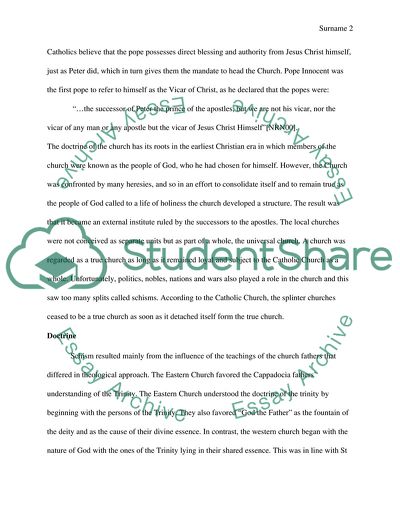Cite this document
(Catholic Understanding of Schism Literature review Example | Topics and Well Written Essays - 1500 words, n.d.)
Catholic Understanding of Schism Literature review Example | Topics and Well Written Essays - 1500 words. https://studentshare.org/religion-and-theology/1858476-how-did-the-split-between-the-western-and-eastern-christian-churches-come-about
Catholic Understanding of Schism Literature review Example | Topics and Well Written Essays - 1500 words. https://studentshare.org/religion-and-theology/1858476-how-did-the-split-between-the-western-and-eastern-christian-churches-come-about
(Catholic Understanding of Schism Literature Review Example | Topics and Well Written Essays - 1500 Words)
Catholic Understanding of Schism Literature Review Example | Topics and Well Written Essays - 1500 Words. https://studentshare.org/religion-and-theology/1858476-how-did-the-split-between-the-western-and-eastern-christian-churches-come-about.
Catholic Understanding of Schism Literature Review Example | Topics and Well Written Essays - 1500 Words. https://studentshare.org/religion-and-theology/1858476-how-did-the-split-between-the-western-and-eastern-christian-churches-come-about.
“Catholic Understanding of Schism Literature Review Example | Topics and Well Written Essays - 1500 Words”. https://studentshare.org/religion-and-theology/1858476-how-did-the-split-between-the-western-and-eastern-christian-churches-come-about.


